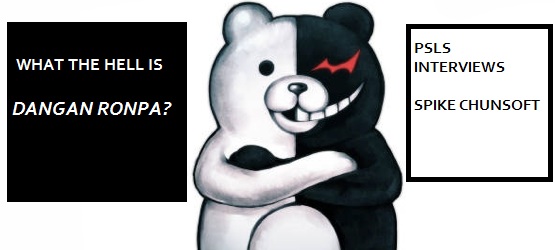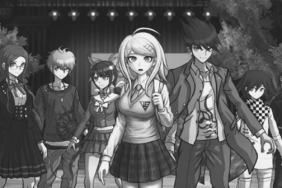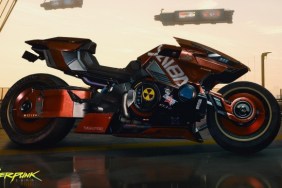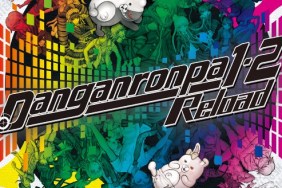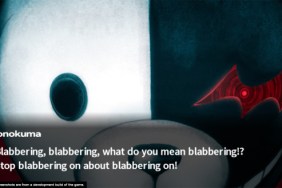After NIS America’s press event, my wife Janelle and I followed Spike Chunsoft’s Yoshinori Terasawa to his hotel room, then locked him inside and killed the lights, forcing him to answer all questions. And if he refused, we swore to…wait patiently and ask again, until he hopefully changed his mind. And then exit politely. Janelle was pretty much running the interview while I stood entranced by that bear.
Here’s what we learned in our conversation with the producer of Dangan Ronpa: Trigger Happy Havoc, coming early next year to PlayStation Vita. Some parts quoted directly, others summarized.
Janelle Hindman for PSLS: Since Dangan Ronpa was clearly inspired by one of three things, can you please specify which of these it was?
-Alcohol
-Childhood nightmares
-Tears of the innocent.
Which had the biggest role in conceiving Dangan Ronpa?Yoshinori Terasawa for Spike Chunsoft: Good question. (Thinks for a minute.) Probably booze.
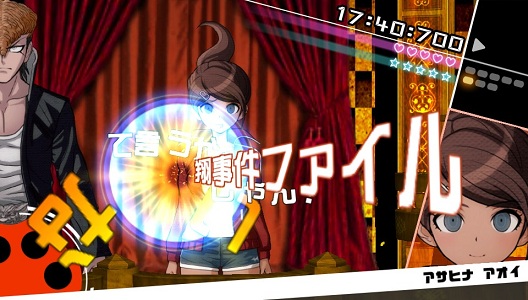
Jokes aside, Terasawa revealed a number of influences for Dangan Ronpa, include movies like Saw and Battle Royale. He and his script writer are big fans of mysteries, and so they decided to make a “closed circle mystery” game together.
PSLS: A game with a story like this needs strong characters to succeed. What was the process in making characters that players could get invested in? A story is more fun when players think “Oh, I hope that person didn’t do it,” or “I want that guy to die!” or something.
Terasawa: There are only 15 characters, so the goal was to make characters extremely iconic, and make it easy for players to know which one is which. The school in the story is for super-gifted children, so for each character to be unique, each character has a specific talent or skill that they’re good at. By doing that, we figured that it would be easy for the players to invest themselves in the characters, and that it would be easy for the players to know the characters very well. Our desire was to make it feel as though any one of the 15 could be the main character.
Readers may be familiar with games like Yakuza 3, which saw a significant amount of content get cut from the original version. That said, something during Terasawa’s presentation to media stood out; he mentioned not being sure if some of DGR’s content would be tolerated by Western audiences. We asked what kind of content he was specifically referring to, and if any had been cut.
Terasawa was quick to say, “First of all, nothing was cut. It’s all there!” He then clarified that his concern came from the ages of the cast members. They’re mostly teenagers, and the West generally has a taboo against extreme violence involving children.
And he’s got a point. If you’ve read George R. R. Martin’s A Song of Ice and Fire books, you know that the TV show, simply called Game of Thrones, tones down quite a bit of the violence and sexuality where children are concerned. Some of it is there, but not nearly the amount or extent that the books include. That, and they’re portrayed on TV as conveniently looking older than their written counterparts. The same can be said of The Hunger Games; in the books, ages range from about 11 to 18, but most kids look older by at least a few years if not half a decade. This has something to do with the quality of child actors, true, but also quite a big to do with backlash against questionable content where children are concerned. These are just a couple of examples. Meanwhile, very young characters can be found doing some pretty intense stuff in Japanese media — and looking 10 while doing so.
When asked why, given all the possible resistance, the characters were made high school students in the first place, Terasawa told us that high school kids are the easiest type of protagonist to project oneself onto. It was also a marketing move, as most people who own Sony’s handheld systems are in high school, in college, or just recently out of college. It’s easy for all of them to relate to characters of this age group and in a high school setting. But if the characters were made adults in, say, their 40’s, younger players might have a more difficult time relating.
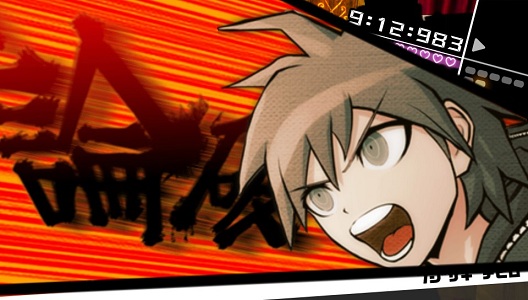
PSLS: If DGR is successful in the west, is there a possibility of bringing the sequels, or the Vita version to the west as well?
Terasawa: Well, if it’s a success, then absolutely! Absolutely, we’d love to bring the games to a wider audience. Just as long as it’s OK with NISA.
Terasawa closed by reminding us that he is aware of visual novels’ low popularity in the West. He and his team did their best, however, to ensure that Dangan Ronpa: Trigger Happy Havoc is beyond a normal visual novel. Look for it for PlayStation Vita in early 2014.
We send our thanks to Yoshinori Terasawa and NIS America for their time.
